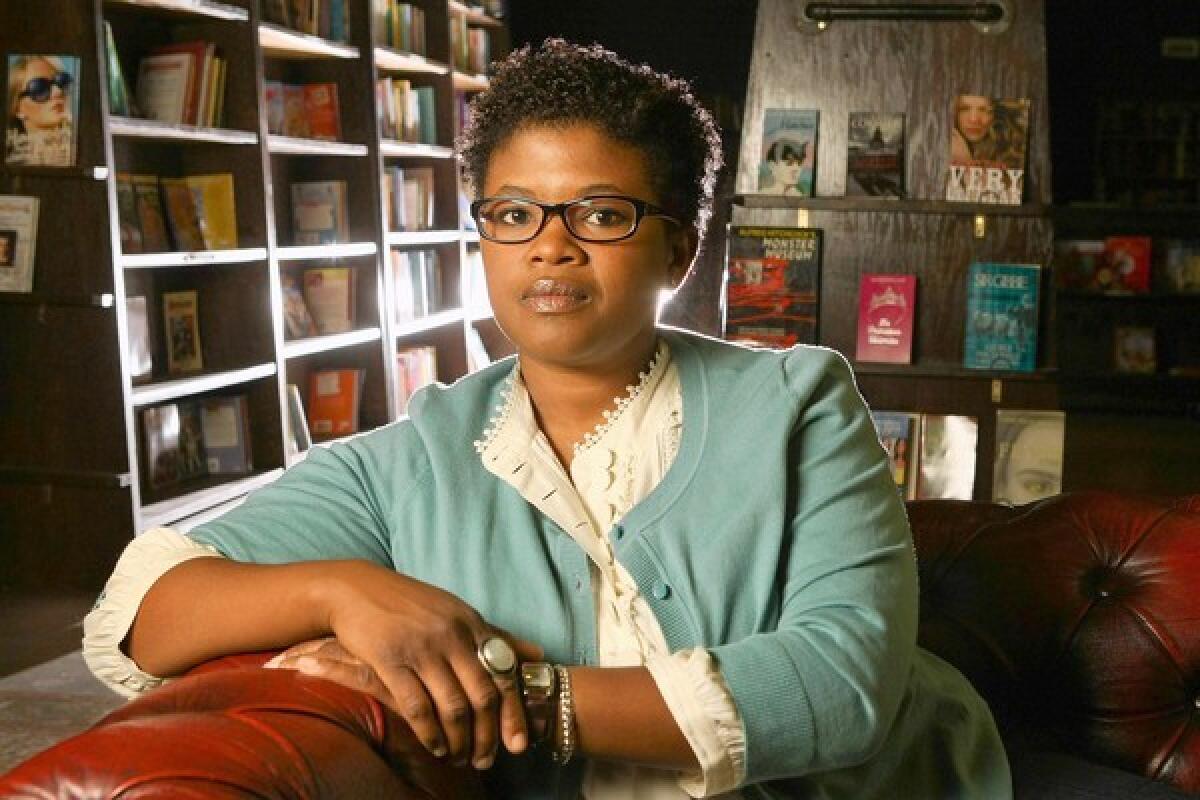Review: ‘The Cutting Season’ by Attica Locke reaches from the present to the past

The Cutting Season
A Novel
Attica Locke
Harper/Dennis Lehane Books: 374 pp., $25.99
How much do I admire Attica Locke’s second novel, “The Cutting Season”? To answer that, I need to go back to her 2009 debut, “Black Water Rising,” which told the story of Jay Porter, an African American attorney in Houston, a former radical in full retreat from the unresolved issues, political and personal, of his past.
Set in 1981, “Black Water Rising” is nothing if not authoritative; Locke, who lives in Los Angeles, was raised in Houston and understands how the city works. But if that allows the novel to operate on a variety of levels — social, historical, cultural — it remains, primarily, an evocation of character.
This is an essential rule of the hard-boiled thriller: to develop drama from the mystery of personality, to find in the individual a microcosm of the compromise and corruption of the larger world. “Black Water Rising,” an Edgar and Los Angeles Times Book Prize finalist, did this beautifully. “The Cutting Season” does an even better job.
That’s because with this novel Locke has opened up not just her writing but also the parameters of the form. Set in 2009, on an antebellum Louisiana plantation called Belle Vie, it is a mystery that expands the whole idea of the mystery, reaching from the present deeply into the past. By the time we see it, Belle Vie has been reinvented, preserved as both historical location — even down to its slave cabins — and high-end banquet site.
“The plantation proper sat on eighteen acres,” Locke writes, “bordered to the north by the [Mississippi] river, and to the east by the raw, unincorporated landscape of Ascension Parish. To walk it — from the library to the northwest corner to the gift shop and on to the main house, past the stone kitchen and the rose garden, the cottages … , the old schoolhouse and the quarters — took nearly an hour.”
The scene Locke sets is beautiful but dangerous, a point she makes in the opening paragraph when a cottonmouth “the length of a Cadillac” falls in the lap of the groom’s mother during a wedding.
The danger is human also, as we learn when a woman is found, murdered, by the fence that divides the plantation from a sugar cane farming combine. For Caren Gray, Belle Vie’s manager, this is a reminder of all the history, everything left unresolved as Louisiana struggled with Reconstruction after the Civil War.
“Belle Vie,” she reflects, “its beauty, was not to be trusted. … [B]eneath its loamy topsoil, the manicured grounds and gardens, two centuries of breathtaking wealth and spectacle, lay a land both black and bitter, soft to the touch, but pressing in its power.”
Caren knows her business. African American, she grew up on the plantation, where her mother was the cook for many years. As a child, she played with Raymond and Bobby Clancy, heirs of the family that has owned Belle Vie for nearly a century and a half.
Not only that, but her ancestors were slaves here, and the presence of that history, which functions in the novel almost as a physical force, blurs the line between past and present, particularly in regard to a man named Jason, who stayed on after Emancipation only to disappear under mysterious circumstances in 1872. These complications function like a web, trapping Caren in the weave of her own lineage, framing “The Cutting Season” as a book in which one murder echoes back to another, where the sins of one generation remain unsettled, an active presence in the landscape of the next.
This is what Locke did with “Black Water Rising,” using crime fiction to examine a broader world. Yet if that novel explored, in part, the betrayals of the 1960s, this one has a more ambitious reach.
The Louisiana Locke portrays prides itself on being, in some important sense, post-racial, but those old divisions, those old distrusts and hatreds, linger. On the one hand, the lines appear to be redrawn, less between whites and blacks than between blacks and migrant workers, “Mexicans mostly, and some Guatemalans, plucked out of rice fields and fruit groves for a few months of working Louisiana sugarcane.”
For Caren — college-educated, with two years of law school — or her ex-boyfriend, Eric, father of her 9-year-old daughter, Morgan, and an attorney in the Obama administration, the 2008 election symbolizes a new level of opportunity. “She’d gone over that ballot three or four times,” Locke writes of Caren, “standing alone in the booth, tracing a finger under the first line, the word President. She wondered what her mother would have made of that, if she’d lived to see it.”
That’s great writing, the kind that gives you goose bumps — not just because of what it says about the character but also it feels so true. Throughout “The Cutting Season,” Locke refuses to take such sentiments for granted, contrasting them with the reality of life on the plantation, where a black worker is railroaded for the murder despite compelling evidence to the contrary, and what’s unspoken between Caren’s family and the Clancys refuses to remain beneath the surface, where it has simmered since the 1870s.
I don’t want to give anything away; among the most compelling aspects of the novel is the steady way Locke deepens her narrative, reminding us that, as Faulkner wrote, “The past is never dead. It’s not even past.” Locke’s insistence on grounding her story in a deeper history pays off because it invests the book with gravitas, a sense of place and consequence, that feels profound and real. How can we isolate one murder, Locke asks, when the earth of Belle Vie itself is stained with blood, when the past refuses to be silenced or stilled? At the heart of this is Caren — torn, conflicted, on the run from herself, yet ultimately unable to avoid the larger questions that are her birthright.
Here, we see the key to “The Cutting Season”: That for all those overlapping layers, it comes together in this one character. We see it in her reluctance, the reticence that leads her back to Belle Vie, and also in her realization that there is no solace in hiding, that we must face who we are.
That’s a tricky — and, yes, dangerous — process; at novel’s end, some things are won and some are lost. But Locke’s refusal to offer false resolution makes “The Cutting Season” that much stronger, by reminding us that history, that heritage, is all we have.
More to Read
Sign up for our Book Club newsletter
Get the latest news, events and more from the Los Angeles Times Book Club, and help us get L.A. reading and talking.
You may occasionally receive promotional content from the Los Angeles Times.







